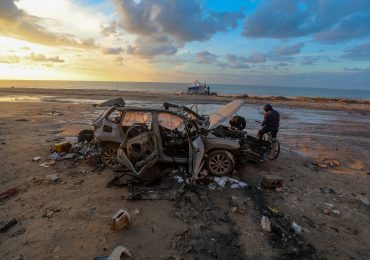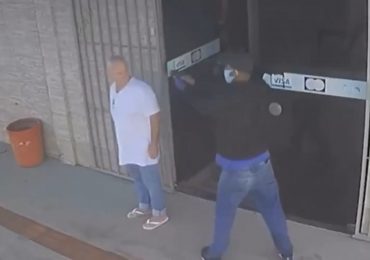WITH its pristine waters, stunning sandstone coves and lush green forest, Gabriola Island, in Canada’s British Columbia, often leaves visitors feeling that they have found paradise.
But the island’s peace was shattered by a series of grisly discoveries when severed feet began washing up in shore – sparking speculation that violent gangs, a mass murderer or even alien abductions were to blame.
AlamyGabriola Island is known for its stunning coves and lush scenery[/caption]
BC Coroner’s OfficeOne of the trainers containing a human foot which washed ashore on the beaches of British Columbia[/caption]
In August 2007, Michelle Geris and her husband George Baugh were on a weekend visit from their home in Vancouver, enjoying the beauty of the island, when things took a macabre turn.
“We decided to take this beautiful little trail that was going between some houses when, out of the corner of my eye, I saw a shoe near the trunk of a tree,” she recalls.
“From the way it was sitting, it looked heavy.”
“It was a big shoe, around size 11, I would say. A man’s shoe,” adds George.
“You could tell there was something inside because it was kind of a greasy white colour.”
Finding a stick to poke at it, George and Michelle were left in no doubt that it was a human foot.
“Michelle said, ‘Maybe we should go to that house over there and ask those people.’ I said, ‘No, we’re not going to talk to anybody in the houses nearby because they could be involved.’ We phoned 911.”
Weirdly, this was not the first call like this that the police had received that week. Six days earlier, another foot had been found, more than 30 miles away, on Jedediah Island by a 12-year-old girl from Washington who was boating with her family.
While they were men’s feet, they didn’t match. They were both right feet from two different bodies.
“That drew the attention of the authorities and the media,” says BBC journalist Celia Hatton, originally from Canada.
In her podcast, Footprints, the reporter travels to Vancouver to hear how more than 20 further feet have been found in the area since then, and to speak to the investigators and scientists who worked to uncover the mystery of why they started appearing.
A third foot was found on Valdes Island on February 8, 2008. Again, it was male, again a right foot.
The fourth, found on Kirkland Island, was a slight departure. While it was another right foot, this time it belonged to a woman.
Fascination was surging around the world as more and more human feet were washed ashore in the area, all wearing running shoes.
Speculation and theories ran wild, from the rational to the outlandish. Amongst them was that it was a form of gangland retribution, a serial killer with a foot fetish and even the work of an extraterrestrial life form.
Chris Brown, a journalist with the Canadian Broadcasting Company, was one of the first on the ground covering the story.
“Vancouver is a lovely city with fantastic mountains and the ocean and people go there to ski and do other outdoor adventures but it also has a dark side,” he explains.
“There’s a terrible drug trade, criminal gangs and there have been mass murders. So, that’s what fuelled the speculation about gangster involvement with the feet. Were they from people who had been kidnapped and thrown in the water?”
RedditSince 2007, over 20 severed human feet, typically discovered in sneakers, have washed ashore[/caption]
Mike JohnsThis grisly flotsam, complete with leg bone, was found by a dog walker on Vancouver Island in 2017[/caption]
Naming the victims
Still they kept washing ashore – as the number reached 24 in Washington State, US.
But all could be mapped out into a specific area that runs from Vancouver Island almost all the way down to Seattle, known as the Salish Sea.
Identifying who the feet had belonged to would be key to solving the macabre mystery.
Laura Yazedjian, an identification specialist with the British Columbia Coroners Service, is responsible for all the cold cases in the province that involve unidentified remains.
“There is actually a lot of information that you can get from the shoe itself,” she says.
“On the tongue of the shoe there is almost always a manufacturer date which means that the person can’t have gone missing before that time. We have a DNA database that has reference profiles from family members of over 1,100 historical missing persons in BC.”
As the feet slowly began to be matched, an intriguing aspect was noticed that added to the puzzle.
Examinations of the bones showed that none of the feet had been mechanically severed from the body, meaning that they hadn’t been cut off. So, how did they become separated? Things were getting weirder.
There’s a terrible drug trade, criminal gangs and there have been mass murders. So, that’s what fuelled the speculation about gangster involvement with the feet
Journalist Chris Brown
Celia visits the Simon Fraser University in the Vancouver suburb of Burnaby to meet Dr Gail Anderson, a professor in the university’s school of criminology, whose work threw light on the mystery.
Gail is one of the world’s leading forensic entomologists. She studies insects found on or around dead bodies and was called in by the BC Coroners Service to help with the case.
“I was asked to come and look at all the feet and collect any insects from them that I could and then try to estimate an elapsed time since death,” she says.
“It’s what I do, but in all of the cases I really couldn’t tell them very much. They were in water so there is no insect colonisation and they were remarkable well preserved because when any form of tissue is in a low oxygen environment, fats from the body can leach out and become this white, waxy putty-like material that remains wet.”
AlamyThe island is a beauty spot popular with visitors[/caption]
XCelia Hatton investigated for the podcast[/caption]
LinkedinLaura Yazedjian was tasked with identifying victims[/caption]
Pigs hold the key
Revelation came in the unlikely form of pigs.
Gail carried out a number of experiments looking at what happens to bodies when they’re left in water that involved anchoring the bodies of dead pigs into waters near Vancouver.
“Pigs are considered the closest thing to humans. They are relatively unhairy so we have used their skin in some human skin grafts and there are more and more organ transplants being used from pigs,” she explains.
The experiments involved using underwater cameras to film the pig specimens.
“We were all shocked by how fast we could get complete skeletisation,” says Gail.
“I mean, we knew that a body could break down much faster than people believe but I don’t think any of us were ready for how quickly the body was completely engulfed and gone in three days.”
Gail found that a range of deep sea scavengers, like shrimp, crabs and lobsters, were feeding on the bodies of the pigs, breaking them down quicker than anyone had previously understood.
“Around the ankle area is where all the bones and joints are and where the tendons are going to break away and be eaten. Once that has been done, the foot is just going to fall off. Normally the whole foot would break down too, but when it’s enclosed in a synthetic running shoe, it’s just going to stay in there.”
sfu.caForensic entomologist Gail Anderson helped solve the mystery[/caption]
WikipediaOceanographer Curtis Ebbesmeyer has studied the tides in the area[/caption]
But why were they being washed into the sea and then along the shore of the Pacific West, primarily in Canada?
Curt Ebbesmeyer an oceanographer in Seattle who has studied the waters in the area since 1966, was able to take a further step in explaining this.
“Canada doesn’t have dams on rivers like there is in the US,” he says. “So, if somebody is lost in the water they can wash out into larger water bodies, whereas in the US they will probably be washed into a dam and the police will come down and take the remains.”
That left the final question in the mystery – why were the feet being washed ashore only in the last few years?
Elizabeth Semmelhack, the director and senior curator of the Bata Shoe Museum in Toronto, says, “The drive to make lighter shoes started in 1972 and it has increased exponentially.”
“If you use materials that cannot be water logged, then you have something that can float,” adds Laura Yazedjian.
“In addition, because they are plastic, they are preserving the foot inside. So, once the foot is disarticulated from the ankle, it becomes a very buoyant container. Because of the trend within the sneaker industry to make lighter and lighter shoes, we are seeing them rise to the surface and being pushed to these shores.”
The work that Laura carried out to identify who the feet belonged to was painstaking but it got results. “All of the feet have been identified at this time,” she says.
“Once these details were clarified, the story changed and the focus was on the people who had died,” says Celia. “We understand that almost all were victims of drowning or had chosen to take their own lives.”
Footprints is available now on BBC Sounds
Leave a comment








